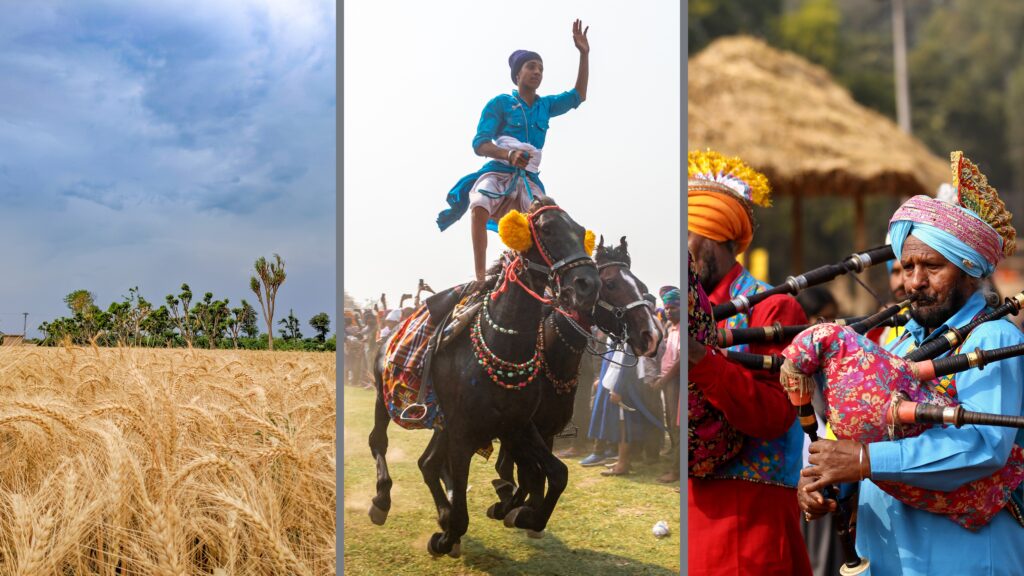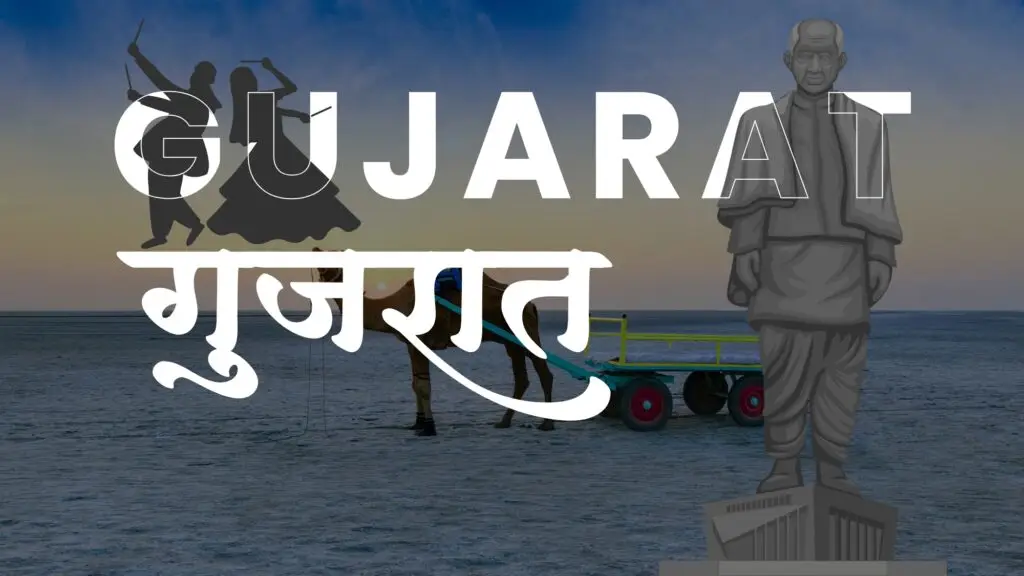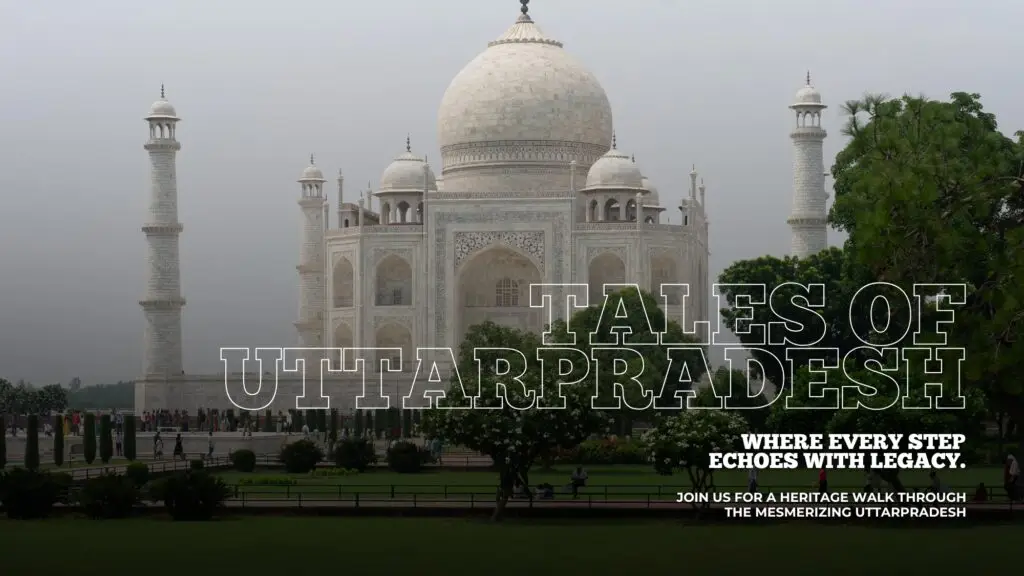Punjab, just hearing the name brings up images of golden wheat fields, the beats of the dhol, and the aroma of “Makki di Roti“ and “Sarson da Saag”. But this gem of India is more than its food, music and farms. It’s a living and breathing story of resilience, generosity and an undying zest for life.
The “Granary of India”, Punjab has not only filled the nation’s stomachs for decades but also enriched its soul with vibrant culture, spiritual depth and an unshakable sense of community. So come along, let’s explore what makes Punjab so special, from its epic past to its present challenges and dreams for tomorrow.

A Land made by bravery and Faith
It’s story goes back thousands of years. It was the main and important regions of the ancient Indus Valley Civilization; imagine that, a vibrant and well-planned city life even before the pyramids were built! Over the centuries, the land saw the rise and fall of empires: from Mauryans to Mughals and eventually the British.
But perhaps the most defining influence on Punjab is the Sikh faith, born here in the 15th century. Guru Nanak Dev Ji, the founder of Sikhism, preached values of equality, service, and devotion and principles that still shape the everyday lives of Punjabi. The legacy continued with the Sikh Gurus and peaked in the Sikh Empire under Maharaja Ranjit Singh, often praised as one of the India’s most successful rulers.
The Rich Culture and Joy
There are so many things that Punjabi can do well from farming to businesses, From Punjabi bhajans to Hip Hop songs, But, There’s one thing in which Punjabi are masters (besides making the best parathas), it’s celebrating life. From vibrant festivals to amazing dance at family gatherings, joy flows freely in this land. It’s not just about the event, it’s about gathering people, sharing joyful stories and living every moment.
Festivals Full of Heart
Take Vaisakhi, the harvest festival, part spiritual marking the birth of the Khalsa it’s celebrated with the kind of gusto that lights up villages and cities alike. Then there’s Lohri, Teej and Hola Mohalla, each bringing its own flavor and dance.
Bhangra, Giddha, and Beats that Travel the World
Not tapping your feet when you hear Bhangra it’s practically impossible. This energetic folk dance, along with the Giddha performed by women, is more than entertainment; it’s an expression of Punjabi joy. And with the rise of Punjabi pop, from Gurdas Maan to Diljit Dosanjh, that rhythm now pulses through playlists from Toronto to Tokyo.
Style and Craft with a Story
Punjabi’s style has its own SIGNATURE. Men wear the kurta-pajama with a proud turban, while women dazzle in salwar-kameez adorned with Phulkari—a traditional embroidery that convert fabric into art, telling stories through stitches passed down generations.
Farms, Factories, and the Fight to Evolve
For the so many decades, Punjab’s green fields were the face of India’s agricultural success. The Green Revolution of the 1960s started here, making Punjab the country’s top wheat and rice producer.
But success has brought its own set of challenges.
Agriculture: A Blessing with Burdens
Punjab is still a major food bowl. But sticking to just rice and wheat has strained the land. Groundwater levels are falling fast, and burning has become a serious environmental issue. The state is pushing for crop diversification, encouraging farmers to grow less water-hungry crops like maize, pulses, and fruits.
Beyond the Fields: Industrial Growth
Cities like Ludhiana have become industrial hubs, turning out everything from hosiery to bicycles. Meanwhile, service sectors like education, healthcare, and IT are steadily growing. It’s clear that Punjab is trying to shift from being just a farming state to a more balanced economy.
Economic Challenges
That’s not all. Punjab’s economic growth has fallen behind the national average. High public debt, job creation issues, and brain drain; where young talent migrates abroad are real concerns. But the good news? There’s an active push to fix this, with investments in skill training, infrastructure and entrepreneurship picking up pace.
The Land of Rivers and Now Reforms
The name Punjab means “land of five rivers” – Satluj, Beas, Ravi, Chenab, and Jhelum. Today, only the first three significantly flow through Indian Punjab, but the legacy of those rivers lives on in the state’s fertile soil and farming tradition.
However, over-farming and rapid development have taken a toll:
- Water Crisis: Tube well irrigation has caused severe groundwater depletion.
- Soil Health: Heavy use of chemicals has weakened the soil.
- Air Pollution: Stubble burning contributes to smog across northern India.
- Water Pollution: Industrial and farm waste are polluting water sources.
But change is underway. From organic farming efforts to waste management policies and climate-resilient agriculture, Punjab is slowly but surely trying to heal its land.
“Tuhada Swagat Hai!” : The Magic of Punjabi Hospitality
If you’ve ever visited a Punjabi home, you know one thing: you never leave hungry—or empty-handed. Hospitality here isn’t just a custom, it’s a way of life. Whether you’re a guest at a wedding or a stranger in a gurudwara, you’re treated like family.
Tourist Hotspots You Shouldn’t Miss
- Amritsar – The breathtaking Golden Temple isn’t just a religious monument, it’s an experience of peace and community. Don’t miss the moving history at Jallianwala Bagh or the patriotic Wagah border ceremony.
- Chandigarh – Modern, clean, and designed by Le Corbusier himself, it’s India’s most organized city.
- Patiala & Ludhiana – From royal palaces to vibrant bazaars and industrial might.
- Rural Punjab – Fancy a farm stay? Experience village life firsthand—simple, grounded, and deeply fulfilling.
Facing Forward: The Road Ahead
Punjab is at a crossroads. On one side: historic pride, culture, and agriculture. On the other: modern-day issues like drug addiction, economic stagnation, and environmental stress.
But here’s the thing about Punjab—its people never back down. From the fields to the factories, from classrooms to kitchens abroad, Punjabis carry their spirit with them everywhere. The government is investing in new industries, education, and youth programs, and there’s growing momentum for change. The goal? A more inclusive, diversified, and sustainable Punjab.
The Pulse of Punjab
Punjab isn’t just a state—it’s an emotion. It’s the sound of a dhol on a wedding morning, the taste of butter-laden parathas, the sight of mustard fields in bloom, and the feeling of being welcomed with open arms.
Yes, it faces challenges. But it also holds the power to overcome them—because if there’s one thing that defines Punjab, it’s chardi kala—the spirit of rising, no matter what.
So, whether you’re planning a trip, tracing your roots, or just learning about this incredible region—know that Punjab will leave a mark on your heart. It always does.
For more blogs on Indian states:




